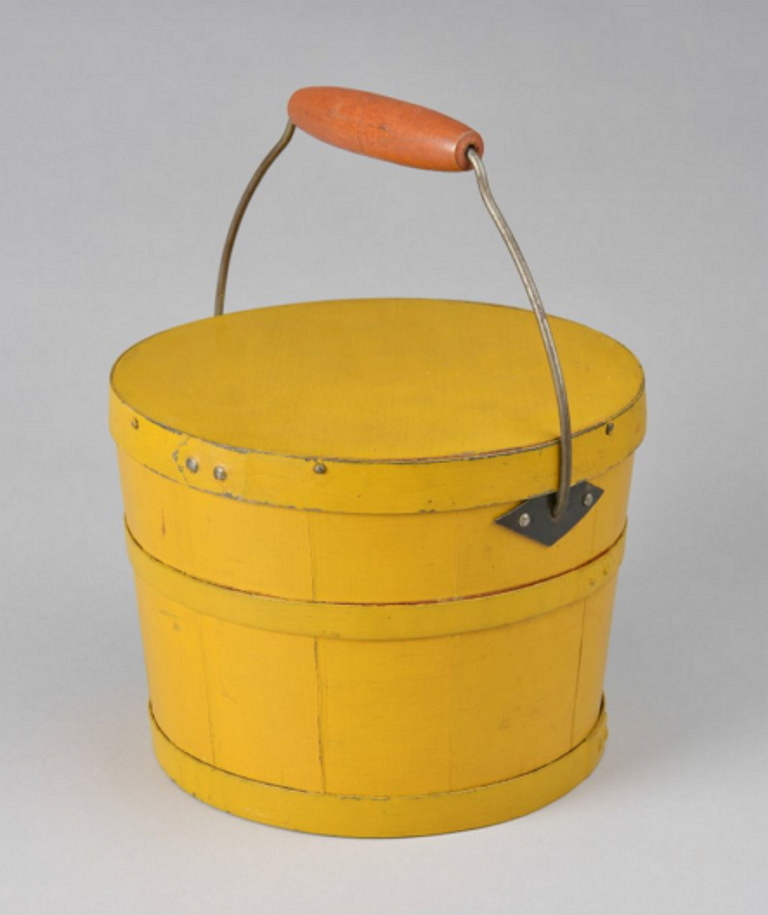Windlass
Windlass from a barn at Canterbury, NH
Description
Windlass of pine with iron shaft, ferrules and fixtures holding pull rope onto wheel end of windlass. Surrounding the iron shaft that extends into the bearing posts is an octagonal pine shaft, about 9 1/4" diameter, upon which the lifting rope winds. 17 winds of 1 1/4" diameter rope are around this shaft terminating in an eye splice containing a thimble and a nicely forged iron hook. At the wheel end, 10 disks of 8/4 pine, about 30" diameter, are fitted around the shaft to provide inertial mass. At the end of the cylinder formed by these disks, a turning wheel is affixed. This wheel is about 71" diameter and is secured to the pine central shaft via four rectangular cross-section "spokes" which are mortised into the shaft. Around the rim of the turning wheel pairs of iron rods, about 5/16" diameter, are inserted into the rim. The exposed ends are bent to form Vs in which 1" diameter rope rides that is used to turn the windlass. These Vs serve the same purpose as the grooves on sheave pulleys, i.e., to keep the rope centered on the wheel rim.
Notes
In a 1950 letter to museum founder John Williams, Eldress Emma B. King of the Canterbury Shakers wrote that the windlass was originally used "to hoist carriages and sleighs to the loft above when out of use for the season."
New Hampshire Canterbury



